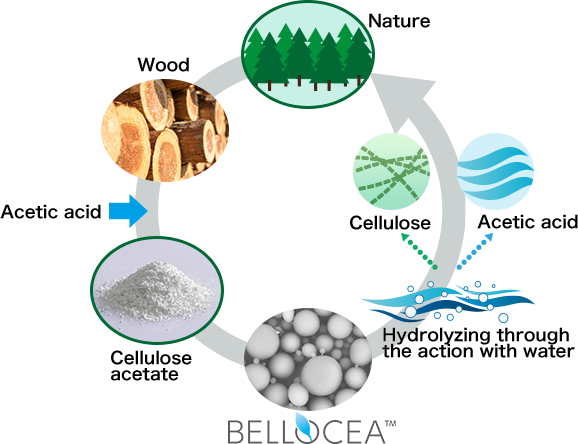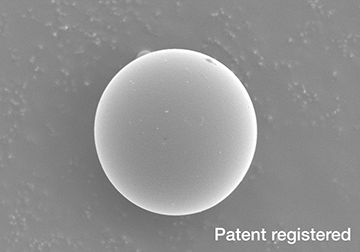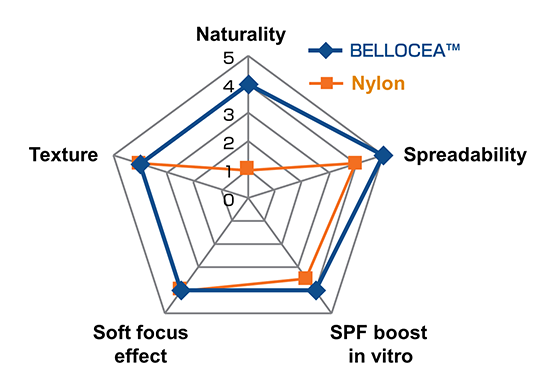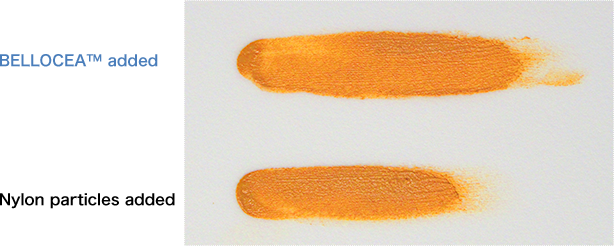BELLOCEA™consists of spherical fine particles of cellulose acetate derived from cellulose, the main component of wood, and acetic acid, the main component of vinegar.

Features

INCI Name:Cellulose acetate
・Spherical particles(Smooth surface)
・Smooth texture
・Good spreadability and dispersibility
・Provides light-diffusivity
・Average particle diameter 7μm
Comparison to synthetic resin material
BELLOCEA™with a feeling of softness, is gentle on the environment and has better spreadability than synthetic particles.
Performance of BELLOCEA™ (Radar Chart)

Texture: Relative evaluation when nylon is evaluated as 4
Spreadability: Length of foundation under specified conditions by friction tester
Soft focus effect: Area of scattered light
SPF boost in vitro: SPF vitro test
Naturality: Ratio of molecular weight
Comparison to W/O type liquid foundation formulation

BELLOCEA™ formulated liquid foundation spreads well.
Comparison of sunscreen formulation on HelioPlates

BELLOCEA™ formulated sunscreen has good dispersibility and improved SPF boost.
※Please contact us for more information.
After washing BELLOCEA™ off the face, it will gradually break down into cellulose, a natural material and acetic acid, a food ingredient, through the action of water in the natural environment. Therefore, cellulose acetate is said to be a material with low environmental impact.
Safety assessment
BELLOCEA™ is composed of fine spherical particles of cellulose acetate, which is made from natural cellulose and acetic acid, the main component of vinegar, and is a substance which is highly safe for living organisms.
| Test items | Result | Testing method |
|---|---|---|
| Skin irritation | Non-irritant | OECD TG439 In Vitro Skin Irritation: Reconstructed Human Epidermis Test Method |
| Skin sensitization | Negative | OECD TG442C In Chemico Skin Sensitisation: Direct Peptide Reactivity Assay |
| Eye irritation | Non-irritant | OECD TG492 Reconstructed Human Cornea-like Epithelium Test Method |
| Carcinogenicity | Negative | Mutagenicity test using microorganisms (Ames test) |
